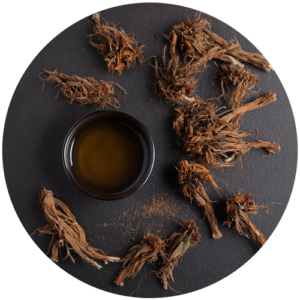ECHINACEA PURPUREA
 Upper airways
Upper airways  Immune system
Immune system Echinacea purpurea L., a member of the Asteraceae family, is native to North America, in the United States. It has been recognized for centuries for its immunomodulating, antioxidant and soothing properties, thanks to the active compounds it contains.
Regulations
and analysis
Identification : TLC
Data on traditional use
EMA monograph :
-
Used for the upper respiratory tract
-
Skin beauty
Monographie Canada :
- Used for the upper respiratory tract
German monograph BGA-BfArM (Kommission E) :
-
Upper respiratory tract
Association ideas by health axis
Select one or more axes:
Detailed description
Echinacea purpurea L. is a perennial herbaceous flowering plant, commonly known as purple echinacea, and belongs to the Asteraceae family. The Echinacea genus is native to the United States, and its species are widely distributed throughout the world. It has been recognized for centuries for its immunomodulatory and respiratory properties, thanks to active compounds such as echinacin B. Modern studies confirm its varied beneficial effects: immunomodulating, soothing and antioxidant. Its active components include polysaccharides, polyacetylenes, alkamides and caffeic acid derivatives, promoting effective immune responses from the various players in the immune system, notably monocytes, macrophages, lymphocytes and dendritic cells. Echinacea also plays a key role in maintaining immune homeostasis, reinforcing the body’s natural defenses.







